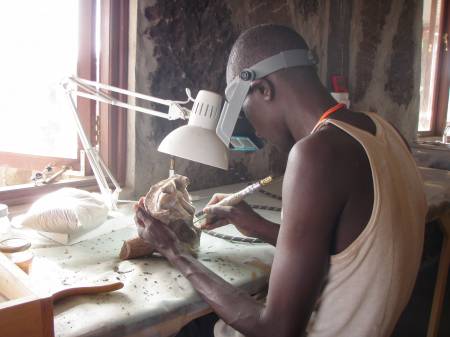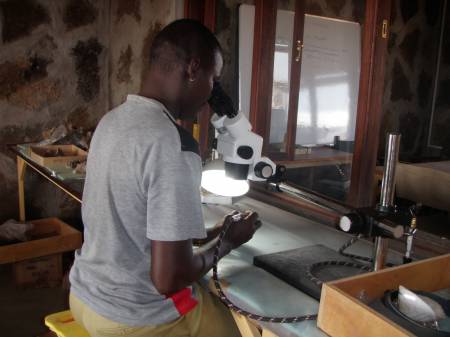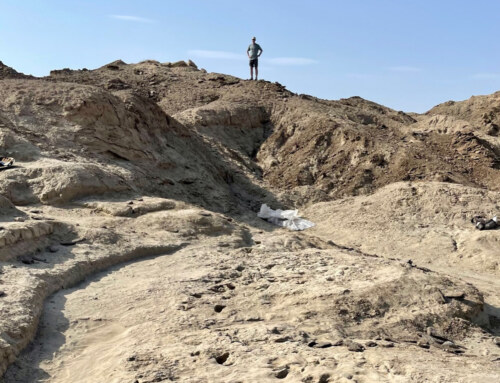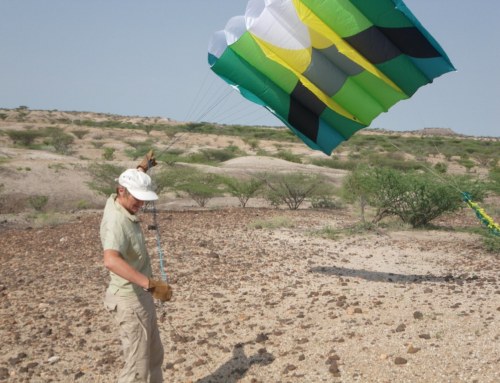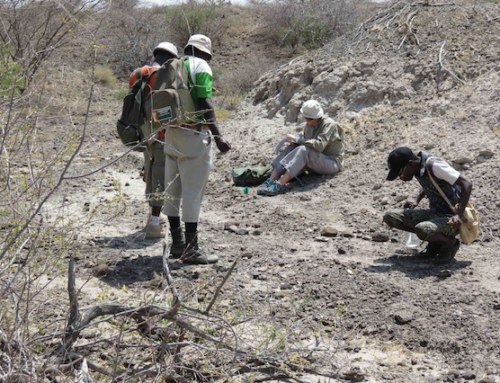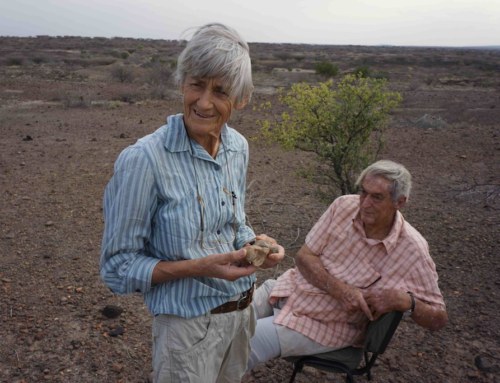While some of the crew have been wet sieving the sediments recovered from the last field season, others have been doing specimen preparation. There are numerous large specimens, most of them in plaster that were recovered from the field over that past few years. Christopher Kiarie, an expert preparator from the National Museums of Kenya has been stationed at Ileret, training the preparators over the past few months. Some of them have now learnt to use the microscopes for the more delicate preparation work. Once the specimens are prepared they are more easily studied. Trainees will get the chance to look at the fossils a second time after they have been collected and identified properly. working on the fossils in the lab also greatly improves fieldwork identification skills. The crew members take turns in preparation so that each one of them becomes an all round expert. In addtiion with all the specimens that need preparation it means that the crew are guaranteed year round employment.
The compressor that drives the airscribes and dental drills that used to remove the sand stone and hard matrix from the fossils, is run using energy generated by wind and solar power. Once the specimens are cleaned they are sorted by taxa and stored in the laboratory.
Crew members Elgite(above) cleaning an antelope skull using magnifying glasses and Apollo (below) using the microscope while he cleans a smaller specimen.

